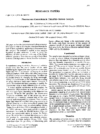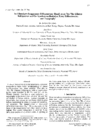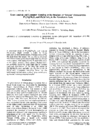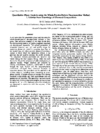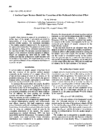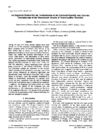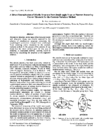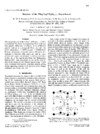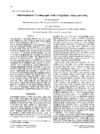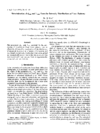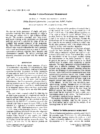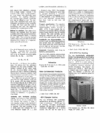issue contents
August 1995 issue

Cover illustration: The observed X-ray diffuse scattering in the (h0l) section of 1,3-dibromo-2,5-diethyl-4,6-dimethylbenzene. Courtesy of T. R. Welberry and B. D. Butler.
research papers
The pole-figure corrections in the case of fluorescent thin-film texture analysis using transmission and reflection techniques are detailed. No use of specific experimental fluorescence suppression is needed, as is proved for thin iron layers deposited on glass substrates.
Synchrotron-radiation X-ray diffractometers used for crystalline materials and solid helium at ultra-low temperatures have been constructed with 3He-4He dilution refrigerators. By their use, the phase transitions of holmium elpasolite and solid 3He and 4He have been studied.
The random displacements of the Pb atom in `relaxor' ferroelectrics PMN and PST have been studied by X-ray diffraction and computer modeling.
A new two-step procedure for quantitative phase analysis using the whole-powder-pattern decomposition method is proposed.
A model where texture is supposed to concentrate in a surface layer of the sample is presented and tested by measurement of X-ray intensities from ammonium chloride powder samples.
A procedure is presented that enables an estimation of the normalization constant with a high degree of accuracy.
X-ray powder diffraction patterns have been obtained for BaBr2, BaCl2 and BaI2 as a function of pressure up to 40 GPa. All these cotunnite-structured compounds in ambient conditions transform to a monoclinic P1121/a Z = 8 structure that is at the present time the final structure in the known high-pressure sequence of phase transformations in AX2 compounds.
Micelle structure, on the basis of the two-shell model with ellipsoidal shape, can be directly analysed by the solution of simultaneous equations concerning the morphological parameters obtained from small-angle X-ray or neutron scattering curves.
This paper presents the crystal structure of YBa4Cu2(CO3)O(5.5±δ) determined by powder X-ray and neutron Rietveld refinement. Disordered (CO3)2− groups are found on two unique sites of a double perovskite cell.
Difference nuclear density maps Δρ, computed as Δρ(low temperature) - Δρ(high temperature) using only observed structure factors, show that thermal vibrations in Mg-doped TbAlO3 and YAlO3 are similar and that the difference density distribution for each atom can be described by zeroth-and second-order spherical harmonics (quadrupolar functions).
The parameters dmin and λmin, essential for the processing of Laue patterns, can be efficiently estimated by examination of the distribution of measured intensities as a function of d spacing and wavelength.
This method uses a high-resolution multiple-crystal multiple-reflection diffractometer to determine the interatomic spacings to within a few parts per million of homogeneous and inhomogeneous crystalline materials.
computer program abstracts
The computer program LQSWPF is a full-matrix least-squares whole-pattern-fit program that can be used to extract the single line intensities from a powder diffraction pattern.
A computer program is described that teaches about plane crystallographic groups by generating patterns plus an optional diagram of symmetries from a user-input asymmetric unit.
A computer program that sorts X-ray reflections from polycrystalline materials by their crystallite of origin is described.
new commercial products
Free 



 journal menu
journal menu









